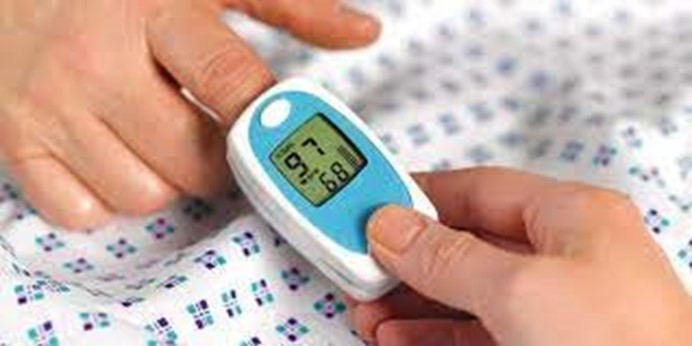The nurse is assessing an elderly client who has become confused since admission to the hospital two days ago.
Which assessment should the nurse complete first?
Oxygen saturation measurement.
Review of current medications.
Intake and output last 24 hours.
Use of hearing aids or glasses.
The Correct Answer is A

This is because the first priority for assessing an elderly client who has become confused since admission is to rule out hypoxia, which can cause or worsen delirium. Hypoxia can result from various conditions, such as pneumonia, pulmonary embolism, or heart failure.
Oxygen saturation measurement is a quick and non-invasive way to assess the oxygen level in the blood and identify hypoxia.
Choice B. Review of current medications is wrong because although medications can cause or contribute to confusion and delirium in older adults, they are not the most urgent assessment to perform.
Medications should be reviewed after ensuring adequate oxygenation and addressing other possible causes of confusion.
Choice C. Intake and output last 24 hours is wrong because although dehydration and electrolyte imbalance can cause or worsen confusion and delirium in older adults, they are not the most urgent assessment to perform.
Intake and output should be monitored after ensuring adequate oxygenation and addressing other possible causes of confusion.
Choice D. Use of hearing aids or glasses is wrong because although sensory impairment can cause or worsen confusion and delirium in older adults, it is not the most urgent assessment to perform.
The use of hearing aids or glasses should be ensured after ensuring adequate oxygenation and addressing other possible causes of confusion.
Normal ranges for oxygen saturation are 95% to 100% for healthy adults. Lower levels may indicate hypoxia or other respiratory or cardiac problems.
Nursing Test Bank
Naxlex Comprehensive Predictor Exams
Related Questions
Correct Answer is C
Explanation
Chicken breast, green beans, and a glass of milk. This is because chicken breast is a good source of protein, which is essential for wound healing. Green beans are rich in vitamin C, which helps with collagen synthesis and immune function. Milk is a good source of calcium and vitamin D, which are important for bone health and healing.
Choice A is wrong because cheese pizza and french fries are high in fat and sodium, which can increase inflammation and delay wound healing. Orange juice is high in sugar, which can also impair wound healing and increase the risk of infection.
Choice B is wrong because cheeseburger and potato chips are also high in fat and sodium, and have similar effects as choice A. Soda is also high in sugar and can cause dehydration, which can slow down wound healing.
Choice D is wrong because spaghetti and meatballs are high in refined carbohydrates, which can spike blood sugar levels and impair wound healing.
A roll is also a refined carbohydrate and does not provide much fiber or nutrients. Chocolate pudding is high in sugar and fat, and can also worsen wound healing.
Correct Answer is ["A","B"]
Explanation
A client with dehydration will have increased heart rate and decreased blood pressure due to the loss of fluid volume and the compensatory mechanisms to maintain cardiac output.
Choice C is wrong because dehydration does not cause increased temperature, but rather decreased temperature due to reduced blood flow to the skin.
Choice D is wrong because dehydration causes hyperactive muscle responses, such as muscle cramps, twitching, and tetany.
Choice E is wrong because dehydration can cause altered mental status, such as confusion, lethargy, or coma. Normal ranges for heart rate are 60-100 beats per minute, blood pressure is 120/80 mm Hg, and temperature is 36.5-37.5°C (97.7-99.5°F).
Whether you are a student looking to ace your exams or a practicing nurse seeking to enhance your expertise , our nursing education contents will empower you with the confidence and competence to make a difference in the lives of patients and become a respected leader in the healthcare field.
Visit Naxlex, invest in your future and unlock endless possibilities with our unparalleled nursing education contents today
Report Wrong Answer on the Current Question
Do you disagree with the answer? If yes, what is your expected answer? Explain.
Kindly be descriptive with the issue you are facing.
